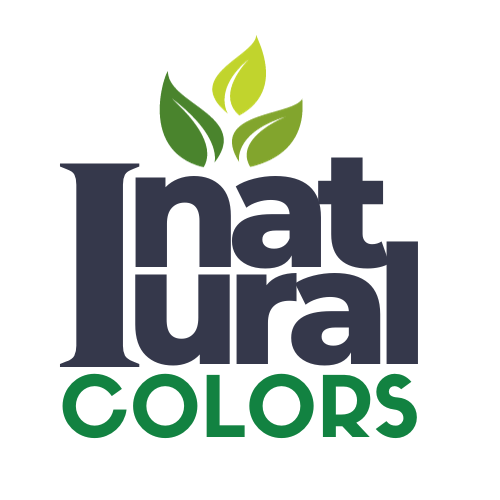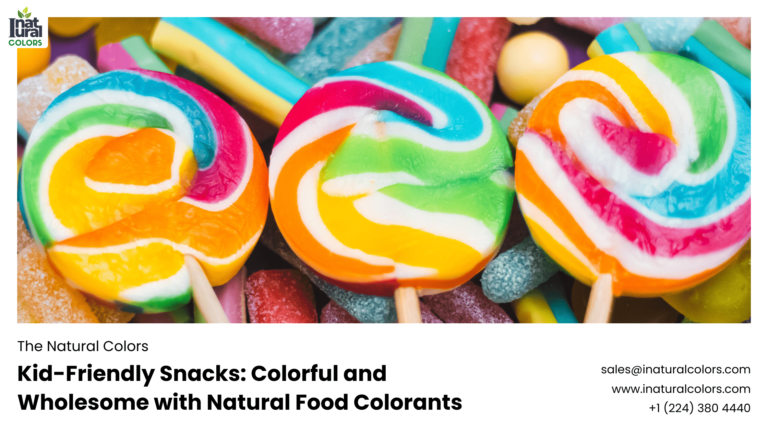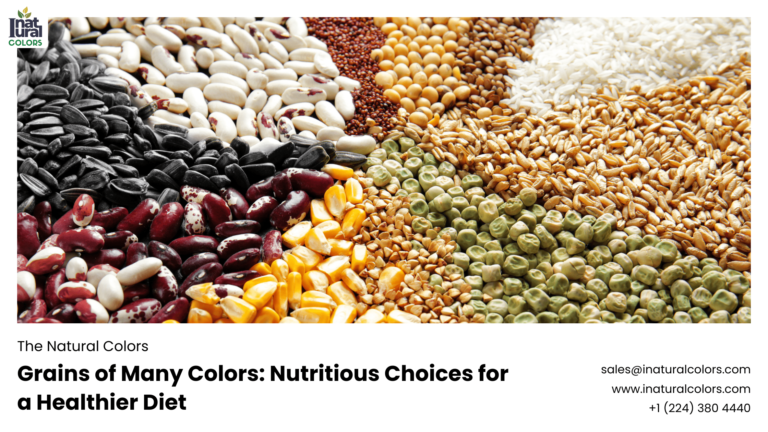Beautiful Plants For Your Interior

The Future of Food Technology with Natural Colors
Introduction
In recent years, there has been a significant shift in consumer preferences towards healthier and more sustainable food choices. This has led to a growing demand for clean label products, with consumers increasingly seeking natural alternatives to artificial additives and colorings. As a result, the food industry is witnessing a revolution in the use of natural colors, paving the way for a more vibrant and sustainable future.
Understanding Natural Colors
What are natural colors?
Natural colors are pigments derived from natural sources such as fruits, vegetables, plants, and minerals. Unlike synthetic colors, which are often chemically synthesized, natural colors are obtained through physical extraction processes, preserving the inherent properties of the source material.
Benefits of Natural Colors
One of the primary benefits of natural colors is their perceived healthiness. Consumers are becoming more conscious of the ingredients in their food and are actively seeking products that are free from artificial additives and preservatives. Natural colors offer a cleaner label alternative, aligning with the growing trend towards clean eating and wellness.
Moreover, natural colors also offer sustainability advantages. With increasing concerns about environmental impact and resource depletion, the use of natural pigments derived from renewable sources provides a more eco-friendly option for food manufacturers.
Challenges in Implementing Natural Colors
Technical Challenges
Despite their benefits, incorporating natural colors into food products presents several technical challenges. One significant issue is stability, as natural colors can be sensitive to factors such as pH, temperature, and light exposure. This can result in color degradation and changes in product appearance over time, posing challenges for manufacturers seeking to maintain consistency and shelf-life.
Another challenge is color variability, which stems from natural variations in the source materials. Unlike synthetic colors, which can be precisely controlled for consistency, natural pigments may exhibit differences in hue, intensity, and shade, requiring careful formulation and quality control measures.
Regulatory Challenges
The regulatory landscape surrounding natural colors can also be complex and stringent. Food manufacturers must ensure compliance with various regulations and guidelines set forth by regulatory bodies such as the Food and Drug Administration (FDA) and the European Food Safety Authority (EFSA). This includes rigorous safety assessments and labeling requirements to provide transparency to consumers.
Innovations in Natural Color Technology
Despite these challenges, ongoing innovations in natural color technology are driving advancements in the field. Researchers and industry experts are exploring novel extraction techniques, biotechnological approaches, and nanotechnology applications to overcome technical limitations and enhance the performance of natural colors in food products.
Advanced Extraction Techniques
Advanced extraction techniques such as supercritical fluid extraction and microwave-assisted extraction are being developed to improve the efficiency and yield of natural pigment extraction. These methods offer advantages such as reduced solvent usage, shorter processing times, and higher extraction selectivity, leading to higher quality and more sustainable natural colors.
Biotechnological Approaches
Biotechnological approaches, including fermentation-based production and plant breeding for color enhancement, are also gaining traction in the natural color industry. Fermentation processes enable the production of natural pigments through microbial fermentation, offering a scalable and cost-effective alternative to traditional extraction methods. Similarly, plant breeding techniques are being employed to develop crops with enhanced pigment content and desirable color profiles, addressing issues of color variability and supply chain sustainability.
Nanotechnology Applications
Nanotechnology is another area of innovation in natural color technology, offering opportunities to enhance the stability and functionality of natural pigments. Nanoencapsulation techniques, for example, involve encapsulating natural colors within nanoscale delivery systems, such as liposomes or polymeric nanoparticles, to improve their stability, solubility, and bioavailability. This enables more efficient incorporation of natural colors into food products, minimizing issues related to color degradation and sensory changes.
Market Trends and Opportunities
The market for natural colors is experiencing rapid growth, driven by increasing consumer awareness and demand for clean label products. According to market research firm Grand View Research, the global natural food colors market is projected to reach USD 2.5 billion by 2025, fueled by factors such as health and wellness trends, regulatory support for natural ingredients, and technological advancements in extraction and formulation.
Consumer Perception and Acceptance
While natural colors offer numerous benefits, consumer perception and acceptance play a crucial role in driving their adoption in the food industry. Educating consumers about the benefits of natural colors, such as their healthiness, sustainability, and clean label appeal, is essential in building trust and confidence in these ingredients.
Educating Consumers
Transparency and communication are key in educating consumers about natural colors. Food manufacturers should provide clear and accurate information on product labels, highlighting the use of natural pigments and their origins. Additionally, consumer education campaigns and marketing initiatives can help raise awareness about the benefits of natural colors and dispel any misconceptions or concerns.
Market Response
Consumer preferences and purchasing behavior are also driving the market response to natural colors. Studies have shown that consumers are willing to pay a premium for products labeled as natural or organic, indicating a growing demand for clean label foods. Furthermore, brands that prioritize transparency and sustainability in their ingredient sourcing and manufacturing processes are gaining favor among consumers, leading to increased brand loyalty and market share.
Collaboration Across Industries
Collaboration across industries is essential in driving innovation and overcoming the challenges associated with natural colors. By fostering partnerships between food scientists, biotechnologists, regulatory agencies, and other stakeholders, the industry can leverage collective expertise and resources to accelerate research and development efforts.
Partnerships in Research and Development
Collaborative research and development initiatives are critical in advancing natural color technology. By pooling together scientific knowledge, technical capabilities, and financial resources, industry stakeholders can develop innovative solutions to technical challenges and regulatory requirements. Public-private partnerships, academic collaborations, and industry consortia are examples of collaborative frameworks that facilitate knowledge sharing and technology transfer.
Cross-Industry Innovation
Cross-industry innovation is another avenue for driving progress in natural color technology. By drawing insights and inspiration from adjacent sectors such as pharmaceuticals, cosmetics, and biotechnology, food manufacturers can explore new approaches and technologies for enhancing the performance and functionality of natural colors. For example, lessons learned from the pharmaceutical industry in drug delivery and formulation can be applied to the development of encapsulation techniques for natural pigments, improving their stability and bioavailability in food products.
Sustainability and Ethical Considerations
In addition to technical and regulatory considerations, sustainability and ethical considerations are increasingly shaping the future of natural color technology. As consumers become more mindful of the environmental and social impact of their purchasing decisions, food manufacturers are under pressure to adopt sustainable and ethical practices throughout the supply chain.
Sustainable Sourcing
Responsible sourcing of raw materials is a critical aspect of sustainable natural color production. Food manufacturers must ensure that the fruits, vegetables, and other natural sources used for pigment extraction are obtained through ethical and environmentally friendly practices. This includes supporting fair
trade initiatives, promoting biodiversity conservation, and minimizing negative impacts on local communities and ecosystems.
Reducing Environmental Footprint
Efforts to reduce the environmental footprint of natural color production extend beyond sourcing to encompass production processes and waste management. Adopting energy-efficient technologies, optimizing resource utilization, and implementing waste reduction strategies are essential for minimizing the environmental impact of natural color manufacturing. Additionally, investing in renewable energy sources and implementing circular economy principles can further enhance sustainability and reduce reliance on finite resources.
Conclusion
The future of food technology is intrinsically linked to the adoption of natural colors. As consumers continue to prioritize health, sustainability, and transparency in their food choices, the demand for clean label products will drive the widespread adoption of natural pigments in the food industry. Despite challenges such as technical limitations and regulatory complexities, ongoing innovations in extraction techniques, biotechnology, and nanotechnology are paving the way for a more vibrant, sustainable, and ethical food system. By fostering collaboration across industries and embracing sustainable practices, the food industry can harness the potential of natural colors to create healthier, more appealing, and environmentally friendly food products.
FAQs
1. Are natural colors healthier than synthetic ones?
Natural colors are generally perceived as healthier due to their origins from natural sources such as fruits, vegetables, and spices. However, it’s essential to note that both natural and synthetic colors undergo rigorous safety assessments before approval for use in food.
2. Do natural colors affect the taste of food?
Natural colors are typically flavorless and odorless when used in food products, so they should not significantly impact the taste of the final product.
3. Are natural colors more expensive than synthetic ones?
Natural colors can be more expensive than synthetic ones due to factors such as sourcing, extraction methods, and regulatory compliance. However, as technology advances and demand increases, the price gap is expected to narrow.
4. Can natural colors be used in all types of food products?
Natural colors can be used in a wide range of food products, including beverages, confectionery, dairy, and snacks. However, their suitability may vary depending on factors such as pH sensitivity and heat stability.
5. Are there any risks associated with natural colors?
Natural colors are generally considered safe for consumption. However, individuals with specific food allergies or sensitivities should always check product labels for potential allergens.



